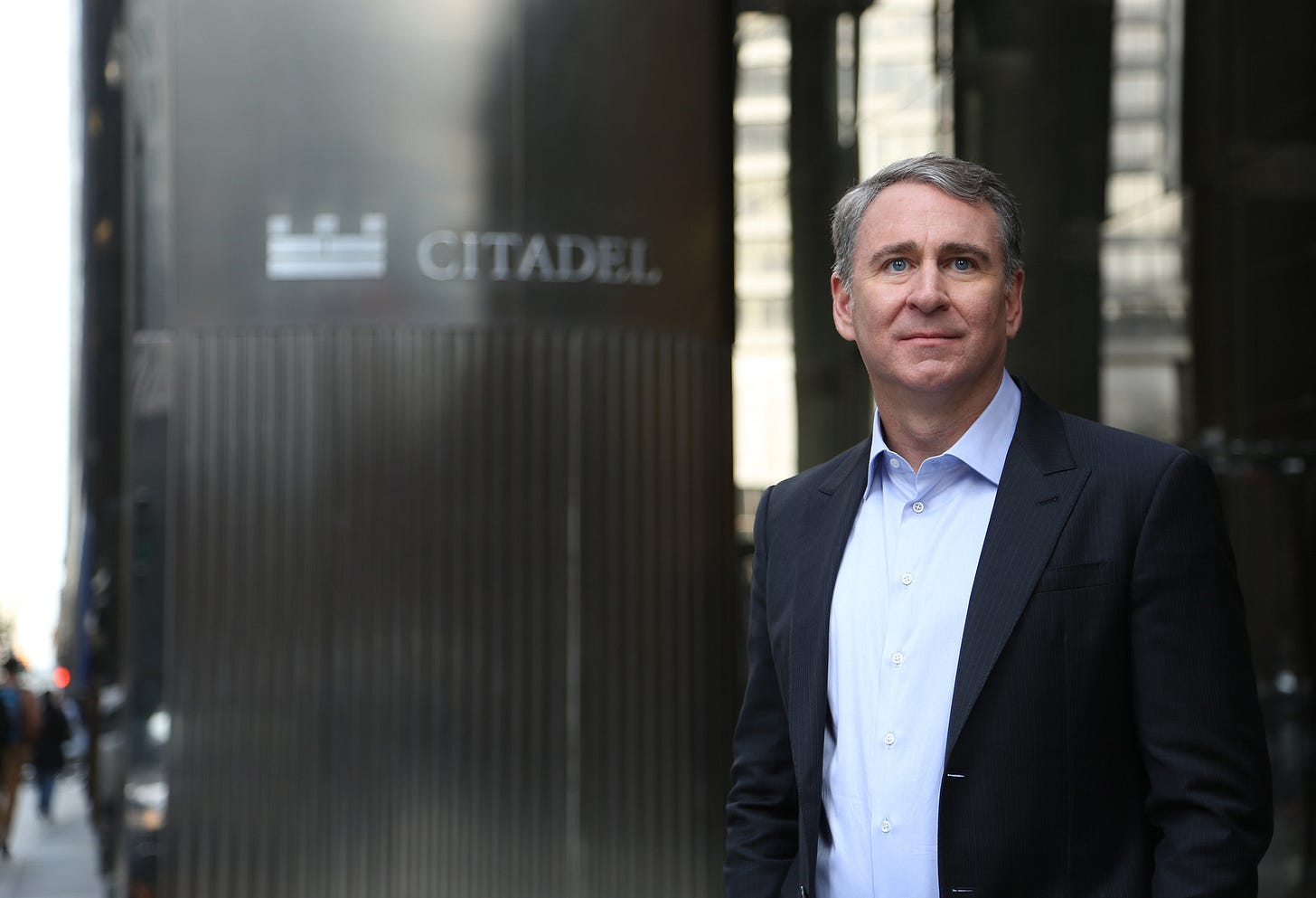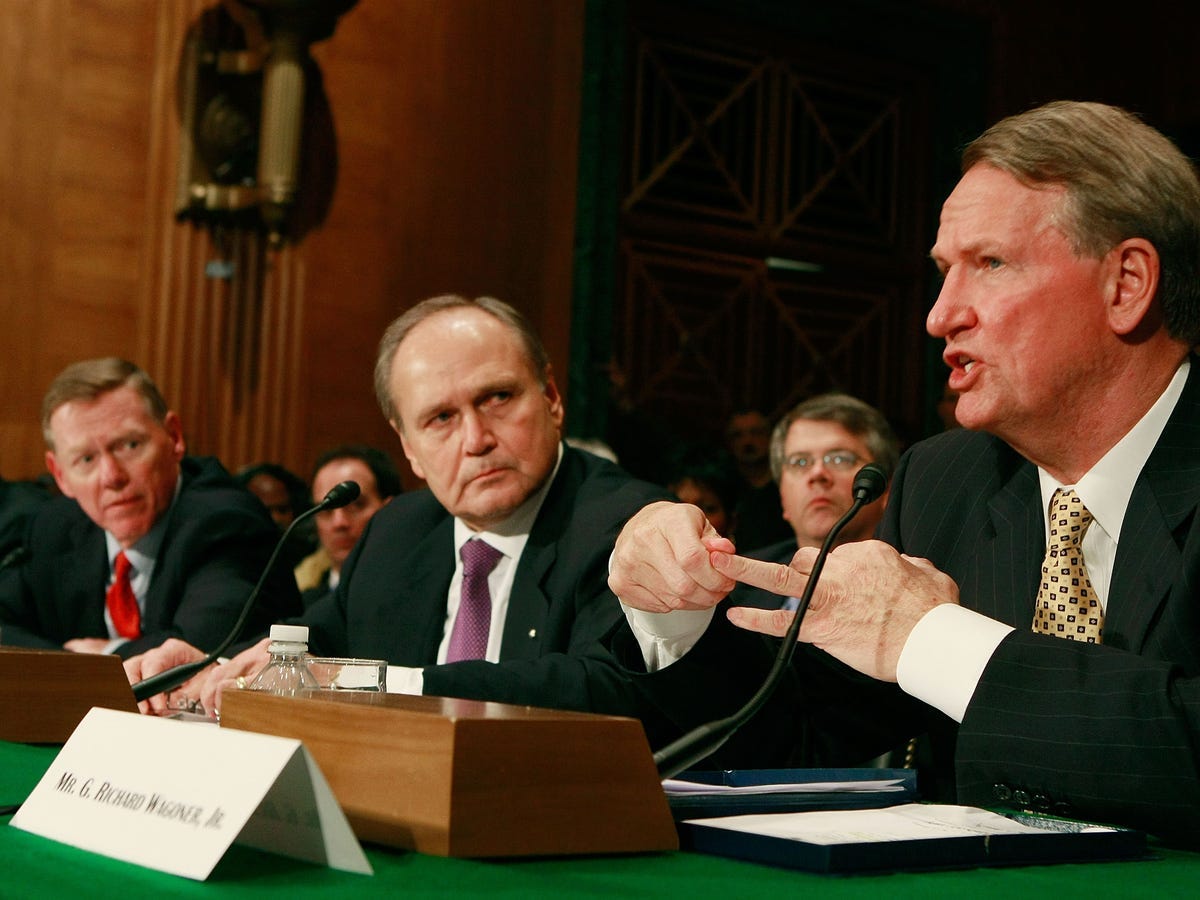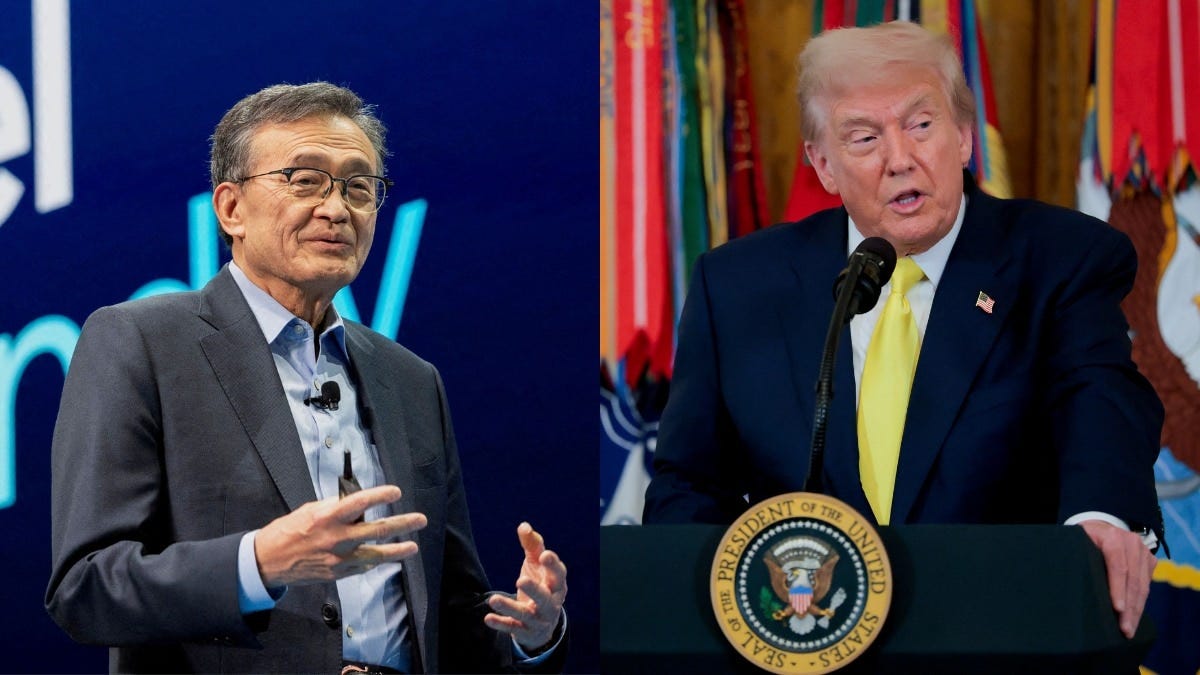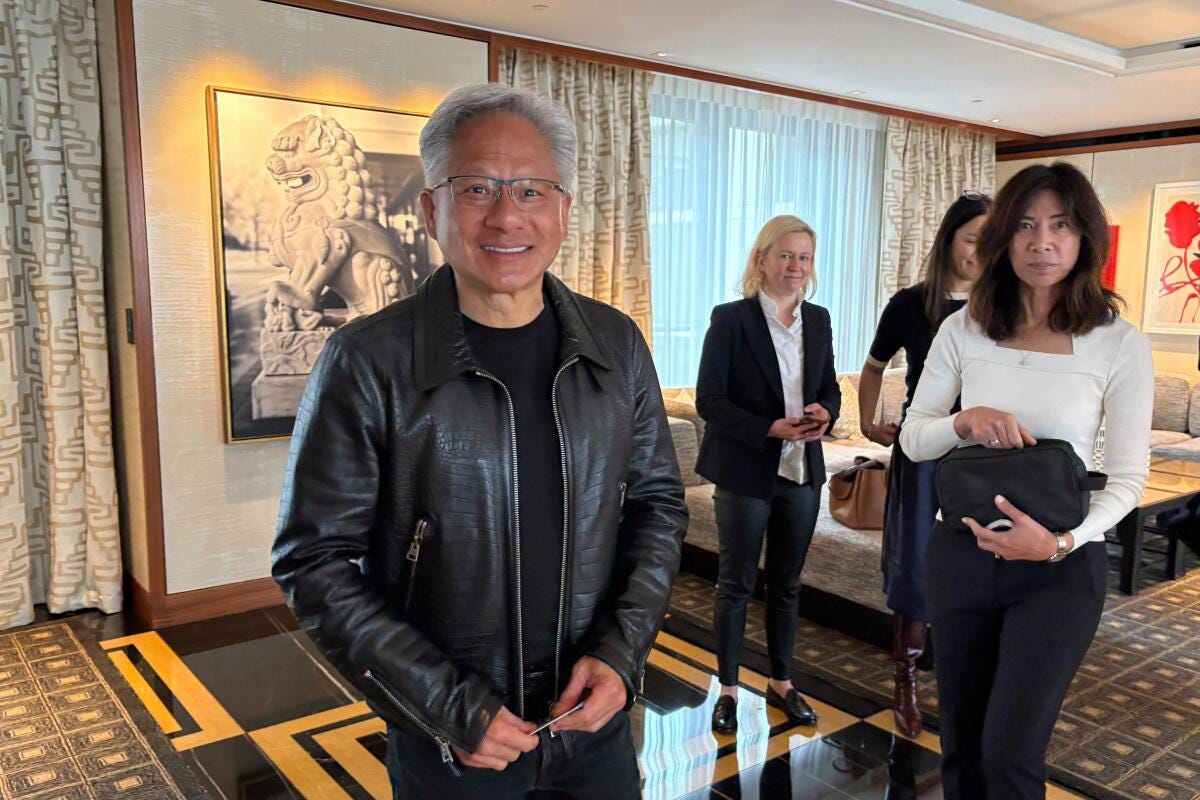Goldman buys Industry, Government buys Intel.
Goldman Sachs buys Industry Ventures for $1B. The US Government buys a $9B stake in Intel.
The private markets are the new public markets.
Ken Griffin has a simple reason why: the SEC has placed too many burdens on public companies and the IPO process.
“People forget that Apple went public at a very modest valuation…people have had their entire retirements defined by being an early investor in Apple, or Amazon, or Microsoft. By making our public markets less attractive for issuance, we’re taking those stories away from the American investor.”
Ken Griffin, founder of Citadel
While it is a bit hyperbolic to claim the private markets are overtaking the public markets, the growth in one key component of private markets could help bridge the gap: secondaries.
Goldman Sachs understands this trend very well.
This is why the firm agreed to acquire Industry Ventures, a San Francisco-based VC firm, for just under $1B.
Industry Ventures, known mostly for their secondaries platform, manages around $7B in assets and has posted an impressive 18% net IRR since its inception.
The deal includes $665M in cash and equity in closing plus up to $300M in contingent payouts based on performance through 2030.
This event serves as a continuation of their existing relationship, as Goldman had both acquired a GP stake and was an LP in several Industry funds.
The acquisition serves many purposes for the firm, but arguably the most important is to provide its wealth management clients with access to high-quality and diversified venture exposure.
Not only will Goldman distribute Industry Ventures’ strategies to its clients but it can also funnel the founders, who now have tapped a liquidity source, into tailored wealth solutions, creating the perfect flywheel.
As Ken Griffin mentioned, the regulatory burden of going public means that most of the AI companies are untouchable for investors. As the IPO window continues to become narrower, this only increases the white space that secondaries can fill, with the most realistic scenario being that the blue chip names adopt a similar playbook to Goldman and distributing access in this way.
This does inevitably create a divide between those who have access to the blue chip wealth advising services and those who don’t, but ideally private market channels for the typical retail investor will likely begin to open up as well. Buying established VCs—especially those with secondaries presence—is an easier way to accelerate market entry versus building organically.
The high demand for liquidity from venture capital funds means that these investing firms are not just waiting around for the market to become more favorable but rather trying to take matters into their own hands.
Major funds have been hiring full time staff to brainstorm creative ways of manufacturing nontraditional exits like different types of secondary transactions, continuation funds, buyouts, and more.
Secondaries can take many different forms, but the two most common structures are GP and LP led secondaries.
LP led secondaries are when a new investor simply buys an existing investor’s stake in a fund for the primary reason of providing the old investor with an exit.
These types of secondary transactions are almost always executed at a discount to compensate for the lack of liquidity, informational lag, and the uncertainty of portfolio exits for the new investor. During a normal market, these discounts tend to be around 10-25%.
GP led secondaries are the transfer of certain assets from an old fund to a new fund, in which investors for the new fund provide an exit for the old fund investors.
The old investors typically have the option of either maintaining their stake or taking advantage of the exit opportunity. These types of secondary transactions are usually done for the portfolio’s winners that haven’t fully matured yet despite the fund life nearing the end.
To make this a bit more concrete, we’ll look at a few companies that have been around longer than the typical 10-year fund life but are still private.
The first example is Stripe, a fintech company that focuses on payment processing, allowing websites and apps to embed its payment API’s seamlessly. The company was founded in 2010 by Irish brothers Patrick and John Collison in Palo Alto and quickly raised funds from Peter Thiel, Elon Musk, Andreessen Horowitz, and Sequoia Capital.
The company saw massive YoY growth, seeing its valuation reach a relative peak at $95B in 2021.
In 2023, the company announced a Series I funding round, planning to raise about $6.5B at a $50B valuation.
On one hand, this perfectly represents the shock the VC world experienced from 2021 to 2023 when rates dramatically increased and capital became more restricted, leading to a wave of down rounds.
On the other hand, it wasn’t a complete defeat for the company’s investors, as this was much different than the typical growth funding round.
The funds would not be used for operating the business but rather strictly to provide liquidity for employees and current shareholders.
Again in February of 2025, Stripe announced a tender offer, agreeing to buy shares from employees and investors—instead this time at a valuation of $91B.
While we don’t have the specific data of which firms chose to liquidate their positions entirely and which ones maintained a balance, it’s clear that they were presented with the option without needing an IPO.
In a similar manner, Databricks, a data engineering and analytics platform founded in 2013, raised a Series J financing round of about $9B on a $62B valuation in December of 2024, specifically allocating a portion of the capital for providing liquidity for early investors.
In addition to these unique funding rounds, more and more companies dedicated to providing increased access to secondaries and other nontraditional liquidity sources (i.e. Caplight) will continue to emerge, leaving companies with one question in mind: does it still make sense to go public?
Only time will tell.
Rome had fallen.
More specifically, Lehman Brothers was officially out of business.
The storied firm whose roots trace back to the pre-Civil War days had amassed nearly $700B of AUM, becoming one of Wall Street’s “Big Five” along with Goldman Sachs, Morgan Stanley, Merrill Lynch, and Bear Sterns.
However, after the housing market collapsed, their unhealthy leverage exposure (30:1 debt to equity ratio) manifested itself quickly, and the losses on its subprime mortgage assets sunk the ship.
If not for extreme government intervention, other massive financial institutions like AIG, Citigroup, Bear Sterns, and more would have likely withered away like Lehman.
The massive hit that the financial services industry took during this period unsurprisingly negatively impacted just about every pocket of the economy.
One of those pockets was the automotive industry.
The combination of consumers having both less disposable income and access to credit led to car sales plummeting.
More specifically, domestic automakers took an even bigger hit due to higher labor costs because of the recent pressure from the United Auto Workers Group.
Between Ford, GM, and Chrysler, unit sales decreased from 16 million to 10 million units from 2007 to 2009.
They were in some trouble to say the least.
Because of this, the CEOs from the three companies did what any free-market-loving entrepreneur would do when their company is in trouble: hop on their private jet to go ask the government for money.
Lots of it—$25B to be exact.
The political class was divided.
The two schools of thought can be summed up by the following quotes:
“It was not an easy decision to intervene, and I didn’t run for office to help out banks or automakers. But I refuse to walk away from workers and communities when so much is at stake. The United States government will stand behind America’s auto industry and its workers.”
Barrack Obama, 44th President of the US
“A government big enough to give us everything we want is a government big enough to take everything we have… We simply cannot ask the American taxpayer to subsidize failure.”
Mitch McConnell, US Senator (KY)
Focusing on GM, the company had $172B in liabilities, $82B in assets, and was losing more than $1B per month.
Their request for funds was initially rejected by Congress, as it was told it needed a detailed restructuring plan before it received a penny from taxpayers.
Over six months, the government provides roughly $49B in TARP funding originally earmarked for financial institutions to the company.
After GM filed for Chapter 11 (restructuring) bankruptcy, the government was able to convert the loans into equity, establishing a 61% stake in the company.
As part of the restructuring, a new entity was created that purchased GM’s “good” assets, leaving the “bad” assets for liquidation. Also, previous shareholders were completely wiped out while bondholders were granted equity and warrants in the new company.
The restructured GM was able to IPO in 2010 and the Treasury offloaded its shares, recovering more than 80% of the original financing.
While the laissez-faire proponents detested this intervention, it was still relatively understandable, as the emergency situation of the Great Financial Crisis ignited a move that the government would not have undertaken in the face of normal times.
Since then, the government has not taken any equity positions in a company, even including COVID.
Until now.
In a seemingly under the radar move, the US government recently purchased 433 million Intel shares for $20.47 per share, equating to an $8.9B investment for roughly 10% of the company.
Most of these funds came from grants allocated from the 2022 CHIPS and Science Act that had been awarded but unpaid.
These shares were not purchased on the secondary markets but rather were issued directly to the US Treasury, diluting everyone else’s ownership.
To understand why this move was executed, more context is needed.
Intel was once Silicon Valley’s crown jewel, dominating the semiconductor world.
For decades, it was the global leader in both chip design and manufacturing, a vertically integrated powerhouse that not only built the brains behind the world’s computers but also owned the factories that made them.
But as we know, good times don’t last forever.
As Taiwan Semiconductor Manufacturing Company (TSMC) ramped up mass production of smaller, more efficient chips, tech giants like Apple began to cease using Intel chips and instead have TSMC manufacture their own custom chips.
Between 2022 and 2024, Intel’s manufacturing arm lost tens of billions of dollars as it scrambled to catch up. Total revenue shrank from $79 billion in 2021 to $54 billion by 2023. The company’s traditional cash cows—the Client Computing Group and Data Center & AI Group—remained profitable but was shrinking.
So Intel did what legacy companies often do when the ground beneath them starts to shift: reinvent itself.
The “new Intel” became a foundry, building chips not only for its own products but for anyone who needed them. The company launched Intel Foundry Services (IFS), pitching itself as an American alternative to TSMC for clients like Amazon Web Services, Qualcomm, and government contractors.
In theory, it made sense.
In practice, it was brutal.
Building a global foundry business from scratch is one of the most capital-intensive projects in modern industry. The company’s fabs in Arizona and Ohio alone would cost tens of billions to complete, and by mid-2025, Intel Foundry Services had already racked up more than $10 billion in losses. Private investors, once eager to back America’s chip resurgence, grew wary of Intel’s risk profile.
Failure seemed inevitable.
But there is simply too much on the line to let a company like Intel fail.
The U.S. produces only 12% of the world’s semiconductors today, whereas Taiwan makes 60%. In a world where a Chinese attack on Taiwan could cripple global supply chains overnight, the government’s interest was clear: domestic chip production is a must if we want to maintain any sort of sovereignty in a world that will be dominated by AI soon, if that time hasn’t already come.
That mission led to the CHIPS and Science Act of 2022 — a $53 billion package of grants, tax credits, and incentives aimed at rebuilding America’s semiconductor base. Intel was its largest intended beneficiary, but progress was slow. The fabs still needed funding, and taxpayer money could only stretch so far.
So, policymakers dusted off a playbook they hadn’t used since GM: converting taxpayer funds into equity in a company.
Soon after, Nvidia announced a $5B investment for a 4% stake in Intel, as the two tech companies will now collaborate on data center infrastructure and PC chips integrating Nvidia’s AI technology.







